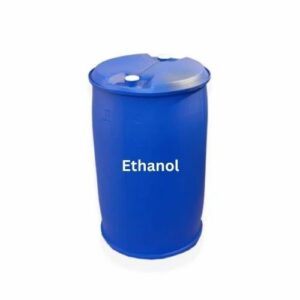Ethanol Product Description
Ethanol, also known as ethyl alcohol, is a clear, colorless liquid with a characteristic odor. It is a volatile and flammable substance that is widely used in various industries. Ethanol is produced through the fermentation of sugars by yeast or through the hydration of ethylene. It is commonly found in alcoholic beverages, but its applications extend far beyond that. Ethanol serves as a solvent, a fuel additive, and a key ingredient in the production of personal care products, pharmaceuticals, and industrial chemicals.
Uses of Ethanol
- Fuel: Ethanol is commonly used as a biofuel, either in its pure form or blended with gasoline (e.g., E10, E15, E85).
- Solvent: It is an effective solvent for various substances, making it useful in the manufacturing of paints, coatings, and inks.
- Antiseptic: Ethanol is widely used in hand sanitizers and disinfectants due to its antimicrobial properties.
- Food Industry: It is used as a preservative and flavoring agent in food and beverages.
- Pharmaceuticals: Ethanol is a key ingredient in many medications and is used in the extraction of active ingredients.
- Personal Care Products: It is found in cosmetics, perfumes, and other personal care items as a solvent and preservative.
Technical Data
| Property | Value |
|---|---|
| Chemical Formula | C₂H₅OH |
| Molecular Weight | 46.07 g/mol |
| Boiling Point | 78.37 °C (173.07 °F) |
| Melting Point | -114.1 °C (-173.38 °F) |
| Density | 0.789 g/cm³ at 20 °C |
| Flash Point | 13 °C (55.4 °F) |
| Solubility in Water | Miscible |
| Vapor Pressure | 5.8 kPa at 20 °C |
| pH | 7 (neutral) |
| CAS Number | 64-17-5 |
Summary
Ethanol is a versatile compound with a wide range of applications across various industries. Its properties make it an essential ingredient in fuels, solvents, and personal care products. Understanding its technical data is crucial for industries that utilize ethanol in their processes, ensuring safety and efficiency in its application.

